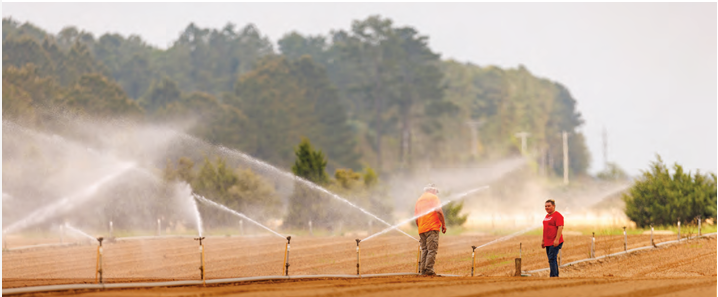
Working forests and their associated watersheds play a critical role in capturing and filtering water used by people, communities, and wildlife.
The trees, vegetation, and soil in our forests provide a permeable surface where water infiltrates the ground to replenish rivers, streams, and groundwater systems. Rayonier’s sustainable forestry practices safeguard water quality and protect this natural cycle of water recharge.
We adhere to all regulatory requirements and deploy best management practices to protect the water quality in our forests, which is essential to the long-term sustainability of our forests and the welfare of the communities they support. Rayonier has specific guidelines that are maintained, updated, and included in forest mapping to help ensure that our harvest plans and timber inventories exclude lands that are environmentally sensitive. We adhere to long-established best management practices requiring protective buffers along waterways, limitations on roads and heavy equipment, and reduced or eliminated harvesting in environmentally sensitive areas. In addition, we plan our forest management and harvesting activities to prevent sediment and other pollutants from reaching streams. In the state of Washington, our roads are updated and improved under regulations established by The Forest and Fish Law, and thereby incorporate many enhanced features to ensure the health of streams used by salmon and trout. In New Zealand, water monitoring for total suspended sediments (TSS) is undertaken at select sites nationwide. We also participate with regional councils undertaking state of environment (SOE) testing, which assesses stream health.
Our approach to forestry regulations remains proactive and we work to enhance our relationships with regulatory agencies and local communities through transparent communication and active involvement. Rayonier team members often serve on boards of regional water management and forest practice committees, which set best management practices for landowners with regard to maintaining water quality.
We are refining our approach to the management of water risk and have started measuring water consumption and identifying ways to reduce water use, where possible. Reported water-usage data accounts for the water used in our owned or leased corporate, resource unit, and forest research facilities, except those facilities that include water usage as part of the lease or where water is provided from local sources that are not metered. Tracking our water use is a major first step, and we look to use this data to identify ways to improve our water conservation efforts.
IMPROVING WATER USE EFFICENCY
Our nursery in Elberta, Alabama, improves water efficiency and lowers energy costs.
In 2022, our Elberta, Alabama nursery installed variable frequency drive controls on two wells. This technology controls the flow of water by only pumping water that is necessary, resulting in an estimated annual savings of over $11,000 in energy costs and 14.5 tons of CO2.
To learn more, view the full Rayonier 2022 Sustainability Report.

